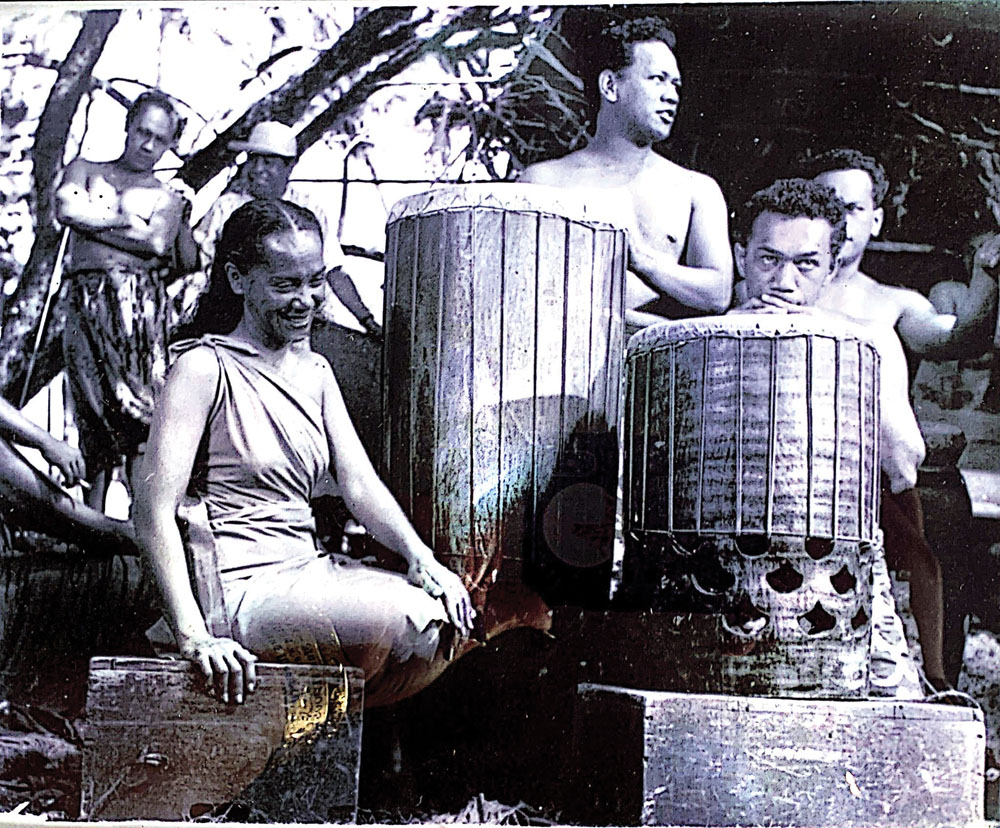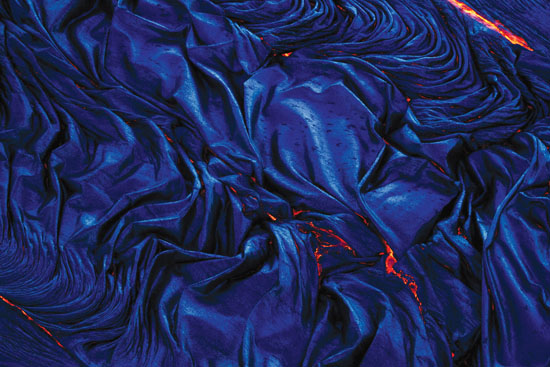
Mission. Quest. Obligation. Love affair. Award-Winning Photographers on Hawai‘i Island
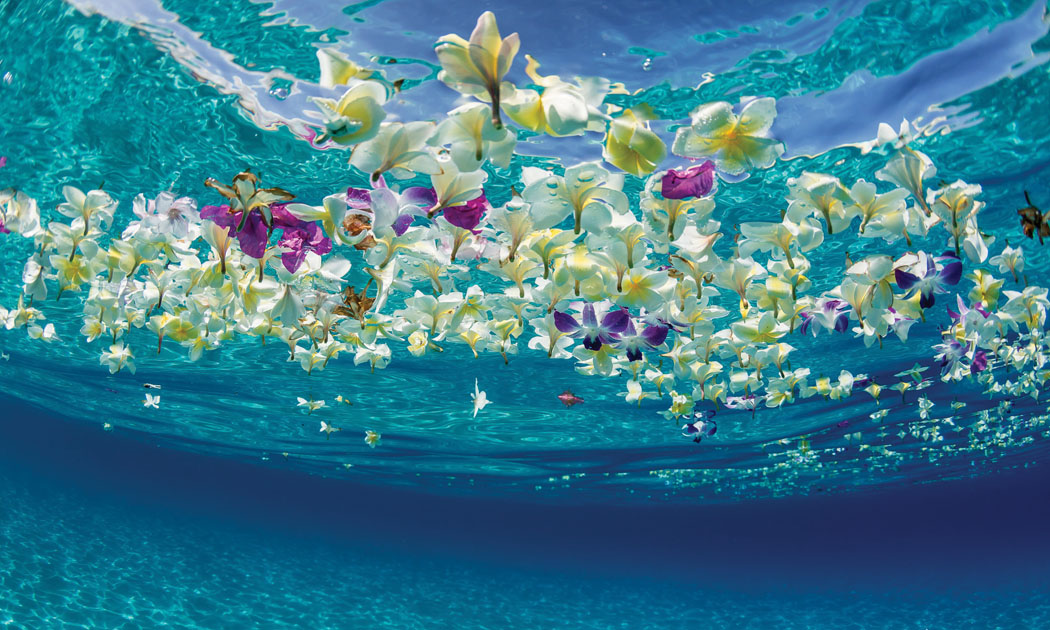
By Catherine Tarleton
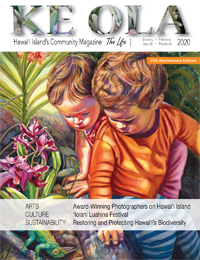
Daredevils, geologists, surf and ski bums, travelers, divers, authors, artists, and poets with pictures, Hawai‘i Island’s award-winning photographers are known around the world. These intrepid souls will go—sometimes literally—to any heights and depths to capture their spectacular images. They have ascended to mountain summits and braved sharks to descend 10,000 feet below the ocean surface in the dark of night. They have plunged into waves just out of reach of molten lava, stood fast on a cooling, shifting flow, fought and overcome obstacles, and never given up.
Their work has been seen in the Smithsonian and other important museums, on major television shows, and in the most prestigious publications on the planet: National Geographic, Life, Surfer, Diver Magazine, Earth, Terra, and Outdoor Photography to name a few.
The following group contains winners in the prestigious Nature’s Best Photography (NBP) competition, the Windland Smith Rice International Awards. Annually, judges review over 25,000 entries from 63 countries, selecting winners in various categories.
Some of Hawai‘i Island’s winners are:
- Don Hurzeler, “Small Worlds” category, 2019
- C.J. Kale, “Power of Nature,” 2010, “Art in Nature” and “People in Nature,” 2009
- Joshua Lambus, “Oceans,” 2012
- Brad Lewis, Category winner
- Nick Selway, “Ocean Views,” 2015
- Doug Perrine, “Underwater World,” 2003
- Bruce Omori, “Power of Nature,” 2013 and “Art of Nature,” 2015
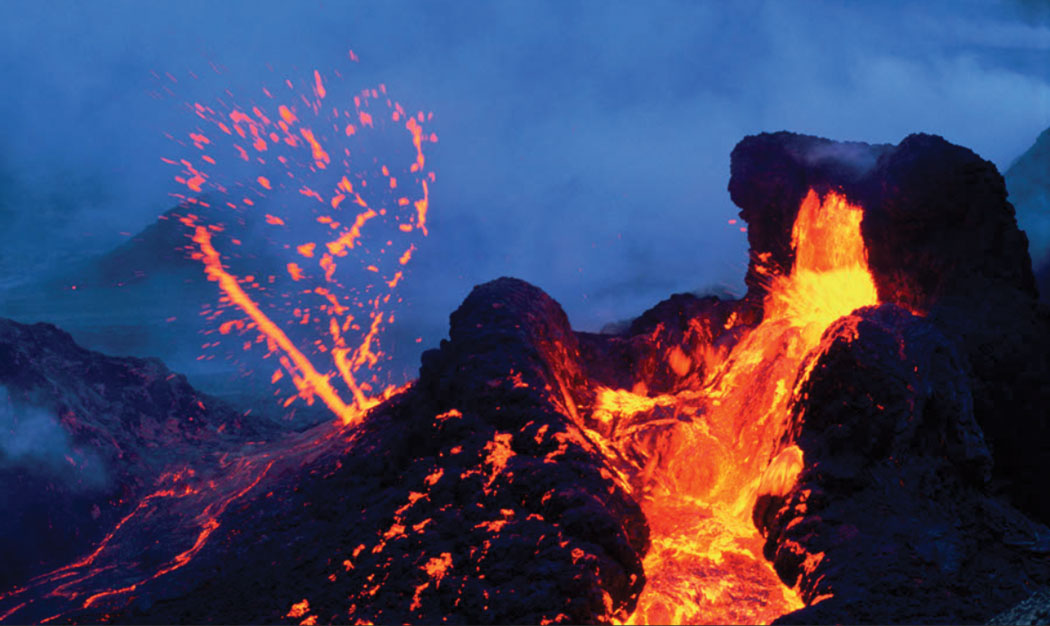
What makes a great photograph? Or an award-winning photographer? Patience.
Don Hurzeler
“Sometimes you have to wait ’em out,” says Don Hurzeler. Don’s photo of a Jackson chameleon—so intricate it looks like mosaic—was taken at a coffee farm in Holualoa. “I go there all the time,” Don says. “I took this one of the chameleon as he transitions from one tree to another. I waited and waited and waited for him to get in the right position, in the right light. I’ve reached down to change lenses and come up and couldn’t find them again.”
Along with wife Linda and fellow NBP winner CJ Kale, Don runs Lava Light Galleries in Queens’ MarketPlace in the Waikoloa Resort. When they’re not in the shop, Don and Linda travel extensively. They spent a month in Australia this summer and went to China in early November. They’ve ventured to Africa on an Africa Wildlife Foundation trip sponsored by NBP, helping spread awareness about protecting natural resources and wildlife.
“My first camera was an Exacta, an East German, WWII vintage, SLR,” Don shares. “It was wonderful but not reliable…I always had decent equipment and a good eye for taking pictures, but I learned from Nick and CJ if you don’t have a coach or a mentor you will only get as good as you’re going to get, not as good as you’re going to be. Nick says you must have someone telling you the truth.”

CJ Kale
One of CJ Kale’s claims to photographic fame is that he was first to shoot lava from inside the surf. “I waited for five years for the conditions to be perfect for this type of shot,” CJ says, “First, the lava had to cross the beach where most of the coast is rugged cliff. Then there needed to be surf. And last, the volume of lava flow into the ocean needed to be just right. Too much volume and the water would be boiling far out to sea, and with too little there would not be enough to be visible in the photo. After waiting several days, the lava had covered the entire beach.”
CJ grew up in Hawai‘i where swimming was second nature. He became a Navy Rescue Swimmer and avid surfer as well as world traveler. His imagery shares the dramatic contrast of earth’s highs and lows, ancient and just-birthed, cracked desert and living ocean. He steps into the picture on occasion, catching a wave with his camera, studying lava at his feet, in one case wearing a falconer’s gauntlet, holding on to a giant eagle.
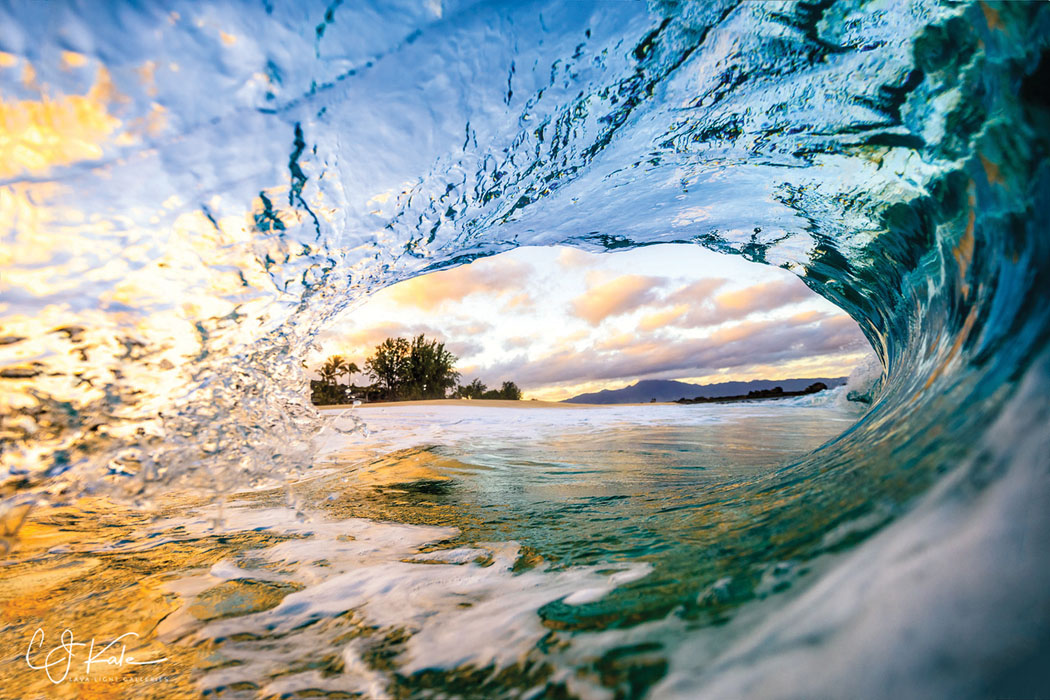
Joshua Lambus
Joshua Lambus is a water child as well. A renowned blackwater diver, his specialty is the deep ocean world at night, when pelagic creatures come up to feed and absorb moonlight. He particularly loves a photo he took in 2008, an alien-looking shot of a deep-water octopus. “It took three years to find that guy,” Joshua says. “He was holding on to two tentacles. Turns out they were two tentacles from a Portuguese Man o’ War that he had torn off and was using against predators.”
Originally from Houston, Texas, Joshua fell in love with diving when he came to Kona. Since then he’s logged over 400 blackwater dives, an experience he loves to share with others, in real life and in photographs.
Nick Selway
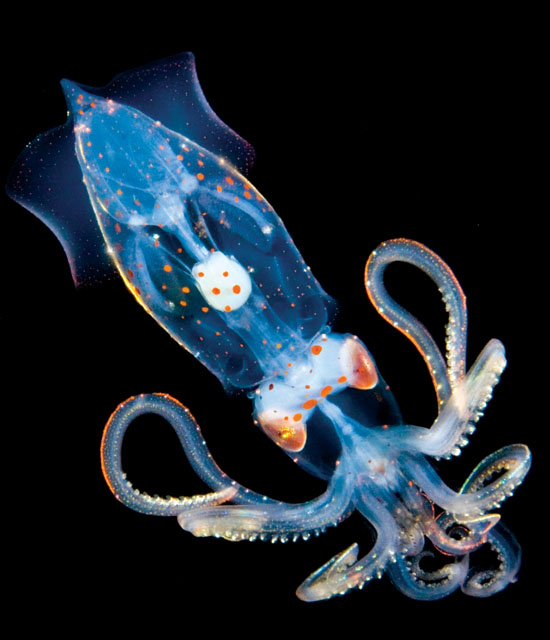
Nick Selway says, “You can think about a certain image you want to capture for a month. Research the best time of day to shoot it, what lens will work best for it. Make sure to check that the weather conditions are best for what you’re trying to capture, and hope that all comes together. Sometimes you get it the first time; other images might take months or years to finally capture it like you envisioned.”
Nick grew up traveling the Pacific Northwest with his family, and fell in love with the natural world. However, it wasn’t until he went to college in Coeur d’Alene, Idaho that he discovered photography. “I had to sign up for an elective class in my freshman year, and saw photography,” Nick says. “It sounded fun so I did, and the rest is history. I have been addicted ever since.” Nick credits college professors Tim Christie and Phil Corlis for changing the direction of his life and inspiring him to success.
Nick’s winning Eye of the Storm seems at first glance to be an alien landscape, something out of Dune, with a distant turquoise lake. “The shot is special because it is a shot of a wave I captured in Hawai‘i and I love the ocean,” says Nick. “The wave had sucked up tons of sand, creating a dramatic looking wave, and at the end of the barrel, the light is coming through, making it look like a storm.”
A lifetime ocean-lover, Nick came to Hawai‘i Island when he was 20 to visit his best friend. He returned home for two weeks, then moved to Kona and got a job working on a snorkel and dive boat. He kept on shooting and building his portfolio, eventually helping CJ open Lava Light Galleries.
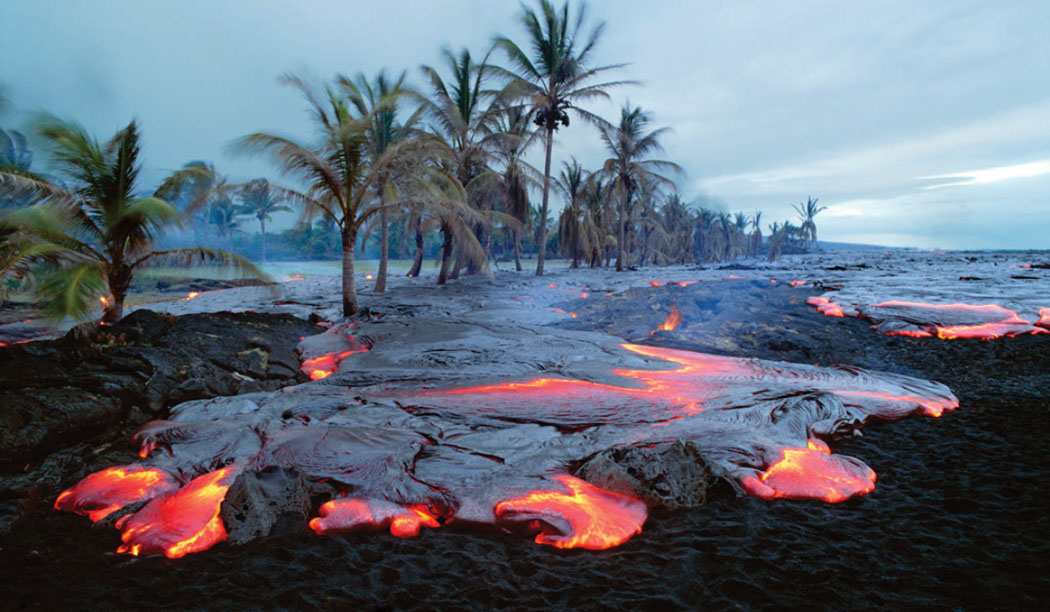
G. Brad Lewis
Brad Lewis moved from Utah to Alaska at age 19, and then took a trip to Hawai‘i in 1983. “I was vacationing on Maui, and I came to this island. I was here when the eruption started. I felt the rumble, saw fountaining of Pu‘u Ō‘ō. I thought, ‘This is wild.’ And, once it really started flowing, the Kupaianaha Flow, it floored me so much.”
The first photo Brad ever sold was a two-page spread in Life magazine. “I shot it with my Pentax 6×7. I was on the moving flow,” he says. “I got calls from a dozen agents after that, and I was off and running, I never stopped…That was a good start.”
Brad says the photo he’s most happy with is Pele’s Heartbeat, which he shot from a helicopter. “That was during the days we were contracted [by Hawai‘i Volcano Observatory], and I could fly in often. I always asked scientists if they wanted to fly in with me. We went in with a couple of guys, and the vent had stopped completely. So we camped out anyway, and I sat there on Pu‘u Ō‘ō for a long time—then all of a sudden it started again. That was in the film days, so I didn’t know I had captured the heart until two weeks later when the film came back!”
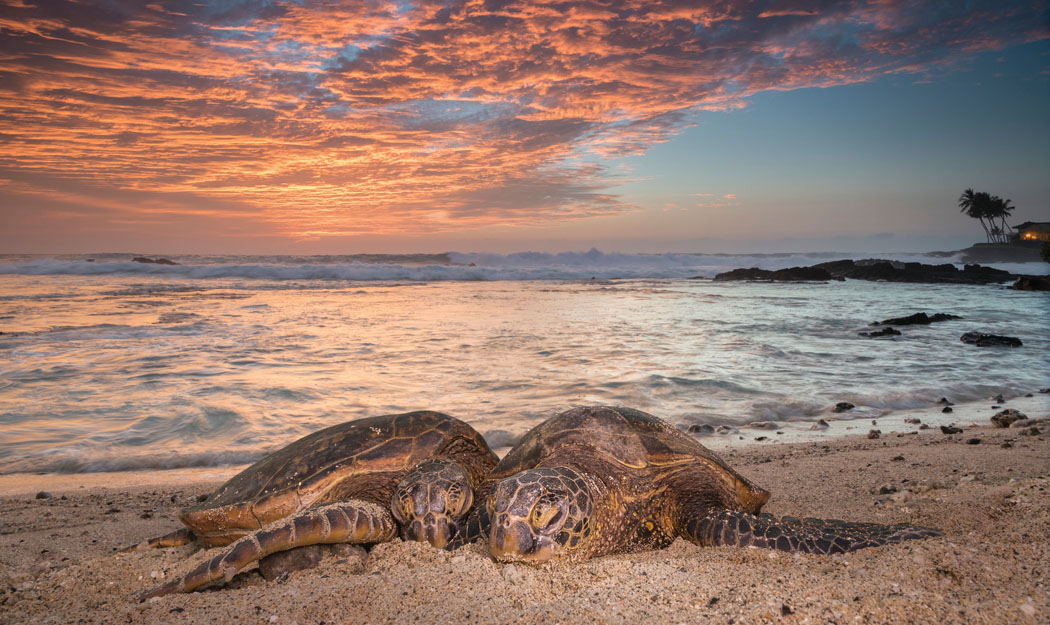
Doug Perrine
In Doug Perrine’s NBP-winning photo, dolphins dance and intertwine in the blue-on-blue light. “It was special because it was taken on a very unusually calm day where the surface of the open ocean was so still that the dolphins were reflected, with very little distortion in the reflected images,” says Doug. “The water seems to merge seamlessly into the sea surface with no horizon line. At that time, very few people had ever seen such a picture—where it seemed difficult to understand which was the real subject and which was the reflected image—and whether the subject was in water or air.”
Doug is from Dallas, Texas, and after high school traveled here to attend the University of Hawai‘i at Hilo. He earned a master’s degree in marine biology, served two tours in the Peace Corps, and returned to the island in 1996. His work is displayed in the Kona Oceanfront Gallery on Waterfront Row.
Bruce Omori

In October 2006, Bruce Omori got a call from an editor shortly after the 6.7 earthquake that rocked the island while he was driving towards the Hāmākua Coast. “Turns out, the editor was North American director of the European Press Photo Agency,” says Bruce. “He had seen my photos on a forum I used to post to, and he thought I had a good eye for composition and creating a story. He asked if I was interested in shooting photos for their wire service…I said ‘Sure, I’ll shoot images for you, I’m heading out there to shoot right now.’ After I sent the photos, they ran worldwide through that wire agency. I got very excited…I still shoot for them. I shoot Ironman every year.”
A local boy, Bruce’s family came to the island in the 1800s when his grandfather went to work on the sugarcane plantations. He attended Kalanianaole Elementary and Hilo High School, and graduated from University of Hawai‘i at Hilo. His gallery is Extreme Exposure, in Hilo.
Bruce recalls one of his business partners in the engineering firm he helped run for 24 years, who was a hobby photographer. “We would always have great, deep conversations about photography,” says Bruce. “He was a gruff ol’ German guy who had traveled the world, and ended up being one of the founders of the [engineering] company. I looked up to him. I would shoot my kids, shoot honey creepers, go around my parents’ yard and shoot [other] birds. I shared these with him, and we would discuss and critique the composition, the colors. I would buy him a Christmas gift every year, and I’d look for books by Ansel Adams, master of light, or Art Wolfe.”
“One of my big inspirations is Art Wolfe,” says Bruce. “He’s one of the world’s most prolific photographers. He’s a nature photographer, but works in every genre there is—wildlife, culture, conservation. I actually met him. We’ve gone shooting a number of times and are really good friends now. His work was a big inspiration and one of the reasons why I shoot today.”
Service or Purpose

“What motivates me to take photos is a few things,” says Nick. “First, I love being out in nature and seeing the natural wonders of the world, Second, I love sharing and selling images to people, because it’s cool to see them seeing an image of yours when it puts a smile on their face. Maybe it brings back a memory for them from their life, or maybe they think it’s just so beautiful they can’t live without it.”
Blackwater diver Joshua says, “I really like the fact that I can show people things they’ve never seen before, never even knew existed. Hopefully they see something to conserve, because the ocean is such a big part of our planet.”
Early on, Doug realized his work was about more than making money. “I think we’re trying to make the world a better place. Bringing beauty and intricacy of the underwater world to the general public, many of whom may never get the opportunity to see for themselves.”
Don Hurzeler remembers one night in particular. “I had two customers and their three kids come to the gallery at Waikoloa about 9:20 one night, right before we closed,” he says. “They looked at all the photos, and when I asked if they’d done everything on their list, they said everything except shoot the Milky Way. ‘Maybe next time.’
“I said, ‘Or, go with Linda and me up the mountain tonight. The moon is down, we are going 8,500 feet up Mauna Kea and you’re welcome to come along.’” It was a jaw-dropping experience for all. “I hadn’t realized how prominent the eruption was going to be,” says Don. “This spectacular Milky Way over all like a rainbow, Puna on fire below.”
Brad Lewis has been shooting the volcano for over 30 years, since long before the first digital camera. Still, he learns something new with every shoot and every eruption. To him, it is a very personal experience, a deep relationship with powerful forces of nature, which has led him to human friendships and rewarding opportunities.
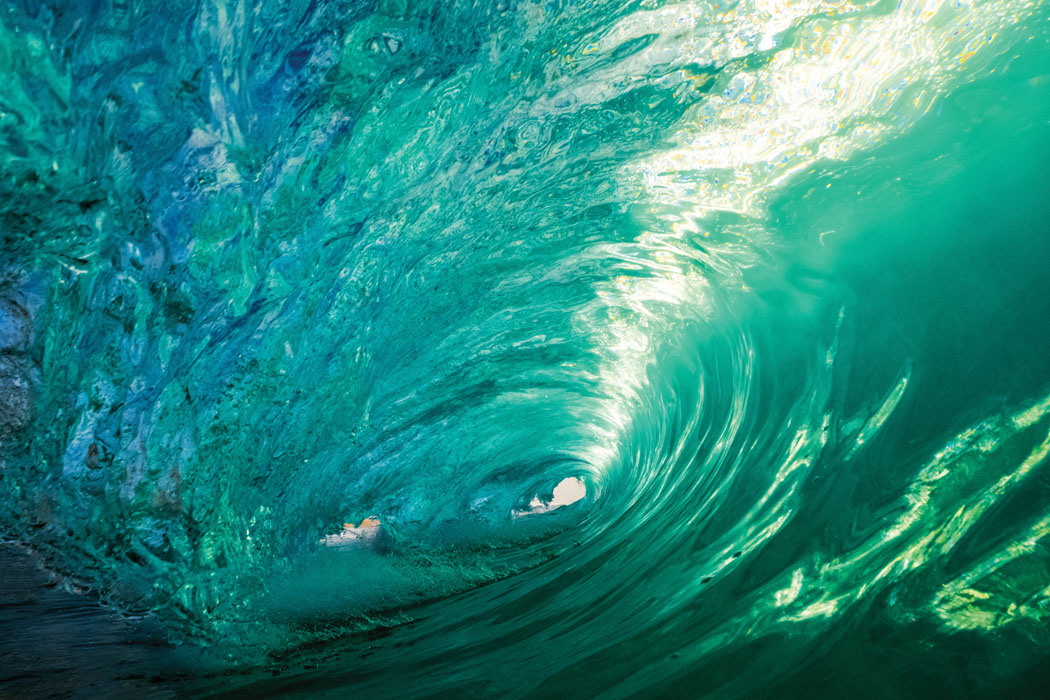
In 2018, Brad spent time in Puna, working with local legend Ikaika Marzo, whom he had met years before in Kalapana. Ikaika was first to post about the eruption on Facebook Live and was also instrumental in setting up what came to be known as “the hub,” Pu‘uhonua o Puna (Punaʻs place of refuge), to help local residents find resources, shelter, help with immediate needs, and current information.
“Back then, I got photos of all these little kids,” says Brad. “I got Ikaika as a little boy, and now he’s this amazing man. I talked to him on one of his early live feeds, and then got on a plane the next day. In Leilani, there was fountaining lava everywhere, and I was able to take that iconic shot of him. That was an incredible event of humans helping humans.” [Editor’s note: this photo of Ikaika was featured on our Ka Puana/Closing Page in the September/October 2018 issue.]
“Digital photography…has gotten people involved that would not have been otherwise,” says Brad. “I met a lot of new shooters this last time in Puna, and it was something special to connect with them. All of them told me, ‘You’re the one that inspired me!’ That’s what my work’s all about, inspiring people.”
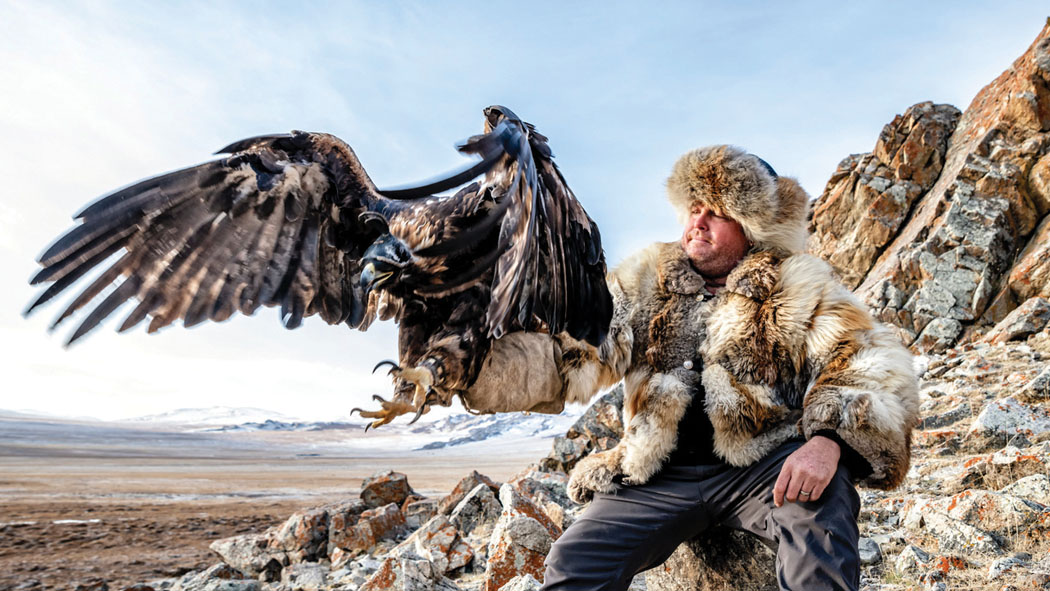
Redemption
Doug explains his sense of service or motivation in a very different way. “I just finished watching this Ken Burns documentary on country music,” he says. “Over and over again I heard the world ‘redemption.’ A lot of country songs are about redemption.”
For him, his photography is about redemption too. “I know how much we [photographers] contribute to the destruction of the natural world we love, and we try to redeem ourselves,” says Doug. “When I go in the ocean, when I breathe carbon dioxide out of my lungs, when I throw out the trash…it’s all destructive in a way. If I can do something to help galvanize people to rise up and take action to save our water planet, I feel like in some small way I redeemed myself. I’ve given myself justification to live on the planet. I’m in some way compensating for the damage I know I’m doing.”
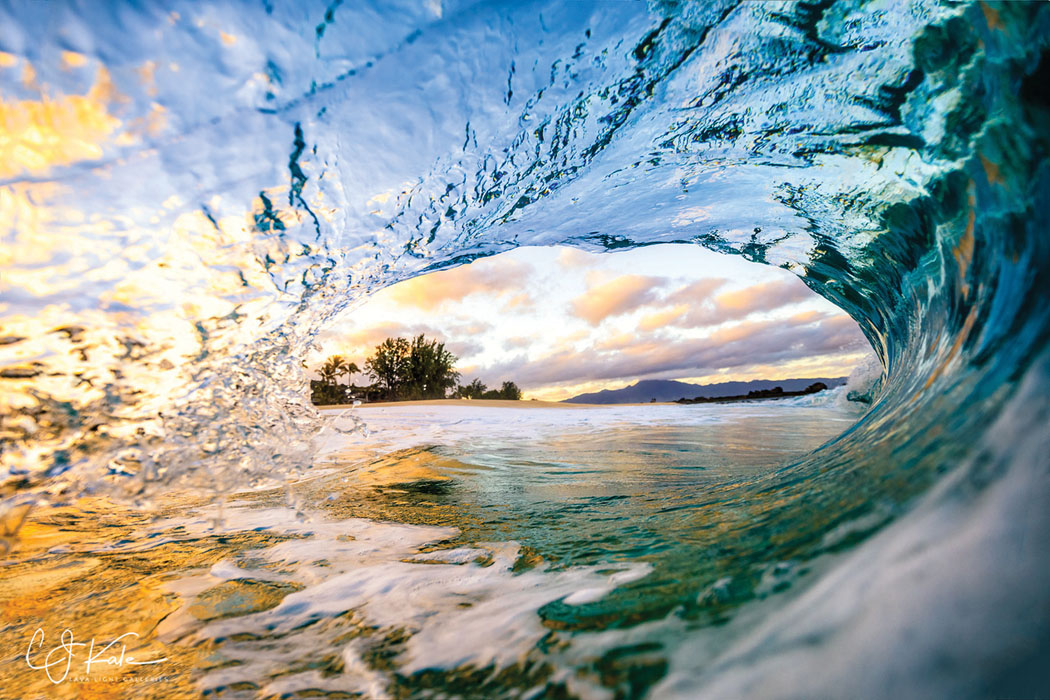
Obsession
Although he didn’t photograph lava until 2008, Bruce says he was always obsessed with the volcano. “I grew up with asthma, and was allergic to sulfur,” he says. “My mother kept me from ever visiting the volcano when it was erupting…I remember going on field trips with my schoolmates…When we went to the National Park, I watched my schoolmates having fun going on hikes, while I sat in the bus in the AC.”
“My mother created an obsession with lava. I still have asthma and allergies, but as an adult, I’ve learned to manage my respiratory issues,” Bruce continues. “When the opportunity arose to shoot lava, I jumped on it…A friend invited me to go shoot, we went down to Kalapana—I took my inhaler—and we shot the lava crossing the road. I was hooked, really addicted to shooting the real stuff.”
Heart and Healing
One of Don’s all-time favorite shots was captured at a serendipitous moment while he was swimming and shooting in the ocean, and witnessed helicopters scattering thousands of flowers for a memorial service. He speaks about it with respect and reverence.

“Phoenix Hauanio died in a fiery crash on Valentine’s Day, 2015. She was just 17 years old. The driver of the car was underaged, drunk, and drugged. In total, three people perished in that accident. Her parents, Daren and Cata Kaleo Hauanio of Kona, held a celebration of life for their beloved daughter on her 18th birthday, April 18,” Don says.
“I was fortunate to capture the beauty of that event just off of Kua Bay,” Don continues. “The photos have since become associated with both Phoenix and the Hospice of Kona…as a reminder of the beauty of life and the love we have for those who have passed.”
Bruce particularly loves his photo of a winding road on Maui. “When I saw that meandering stretch of highway, it reminded me of all my struggles in my life. In fact I called it My Life,” says Bruce. “I shot it soon after I left the engineering job. My mother was diagnosed with Alzheimer’s not long after my father passed.”
“Work was getting stressful. I had moved my family back to Hilo and was commuting,” Bruce continues. “There was a lot of pressure, because I felt the need to be there and put in more time. I would stay and work overnight one, then two or three nights a week. My partners were still not happy. I started having cardiac issues and went to the doc, who said nothing was wrong. The chest pains were caused by stress—mainly the commute—and if I kept gong it would kill me.”
Bruce says, “Photography was my therapy. I would go out and shoot surfers, wildlife, native birds, forest. In two or three months, the pains disappeared…The first photo somebody paid for was the result of all that.”
To Doug Perrine, being a photographer is many things. “It’s a mission, it’s a spiritual quest, an obligation, it’s a love affair,” he says. ❖
For more information:
lavalightgalleries.com
jlambus.com
volcanoman.com
nickselway.com
dougperrine.photoshelter.com
extremeexposure.com
